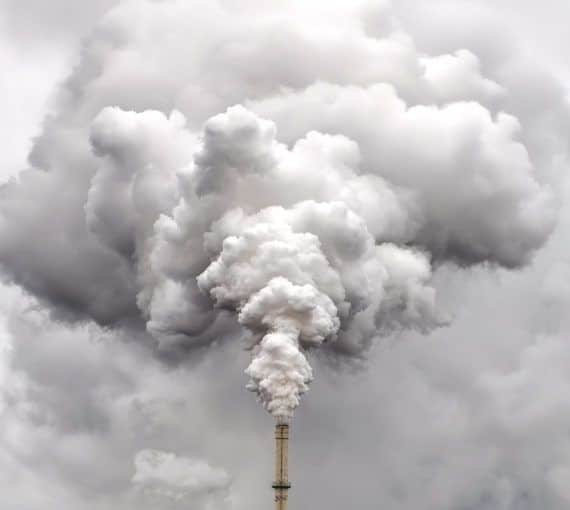
Canada can reliably and affordably meet rising demand as we shift from fossil fuels to clean electricity. (Photo: Luca Bravo via Unsplash)
A David Suzuki Foundation study found Canada’s Prairie provinces could be energy superpowers.
It’s not because of their diminishing supplies of polluting, climate-altering coal, oil and gas — or even uranium for nuclear power. The Prairies have an abundance of cleaner, less expensive energy: sun and wind.
Southern Saskatchewan and southeast Alberta get more sunshine than anywhere else in Canada, with some communities seeing more than 2,400 hours a year. According to a CBC article, “The rest of Alberta, Saskatchewan and Manitoba are not far behind, racking up over 2,000 hours per year.” That’s almost twice as much as some areas along the Pacific coast!
A lot of wind also blows across the flat Prairie landscapes. In fact, most farms into the 20th century had windmills, mainly to pump water.
Now, people on the Prairies are harnessing this natural bounty to fuel a clean-energy revolution — creating jobs and helping steer us away from the vagaries of volatile international oil markets and prices. Alberta, especially, is shifting from being the leading producer of fossil fuels to a renewable energy powerhouse — despite its government’s single-minded focus on outdated fuels. That government’s enthusiasm for markets, however, has created a good climate for renewable energy developers.
Alberta, especially, is shifting from being the leading producer of fossil fuels to a renewable energy powerhouse — despite its government’s single-minded focus on outdated fuels.
In Vulcan County, north of Lethbridge, Canada’s largest solar farm is nearing completion. Covering 13.5 square kilometres (3,330 acres), the Travers Solar Project will have 1.3 million solar panels producing 465 megawatts, enough electricity to power 150,000 homes. It’s also created about 800 direct jobs.
Also in Vulcan County, the 300-megawatt Blackspring Ridge Wind project was completed in 2014, and last year, the 353-megawatt Whitla Wind project southeast of Lethbridge beat out Blackspring to become Alberta’s largest wind facility.
Saskatchewan now gets 25 per cent of its power from renewable sources, with 20 per cent from hydro and the rest from wind. With several projects underway — including one solar and three wind facilities — that’s increasing. Three more solar and one wind project are also in planning stages, along with several community-based installations. Saskatchewan has also started building a battery storage facility in Regina.
“Shifting Power: Zero-Emissions Electricity Across Canada by 2035,” by the David Suzuki Foundation with independent researchers from the University of Victoria, shows that, by investing in wind and solar generation, and improving interprovincial transmission and upgrading energy efficiency, Canada can reliably and affordably meet rising demand as we shift from fossil fuels to clean electricity.
That means creating a more interconnected grid so that, for example, “as a weather system with strong winds moves across the prairies, Alberta can export excess electricity generation to Saskatchewan or British Columbia when windy conditions prevail to the west and then import power from Saskatchewan as the storm moves east. When B.C. is importing wind power from Alberta, it can scale back hydroelectric generation, keeping its hydro reservoir capacity for later use.”
Saskatchewan now gets 25 per cent of its power from renewable sources, with 20 per cent from hydro and the rest from wind. With several projects underway — including one solar and three wind facilities — that’s increasing.
The study shows that the grid maintains reliability so electricity is there when and where it’s needed and that costs are comparable to business-as-usual and get lower as the grid is cleaned with renewables and fuel costs are eliminated. Other studies show that shifting away from fossil fuels for cars and home heating reduces household costs.
As with all energy developments, there are impacts, although not nearly as many or severe as with fossil fuels. Renewable energy projects, including energy storage infrastructure, require space and materials, many of which have to be mined. They’ve also been associated with human rights abuses in parts of the world — especially mining and hydro developments.
These issues must be addressed in the same manner as all human activities and the products that support them — by ensuring things last longer, that they and their components can be recycled or re-used, by manufacturing materials and situating infrastructure in ways that are less damaging to the environment and communities, and by ensuring that equity, justice and shared decision-making are inherent.
The Foundation’s study is accompanied by a companion report, “Decarbonizing Electricity and Decolonizing Power: Voices, Insights and Priorities from Indigenous Clean Energy Leaders,” by Neegan Burnside and Dean Jacobs, which sets out six principles for upholding Indigenous rights and ensuring Indigenous communities benefit from a transition to emissions-free electricity.
The future of energy is renewable — especially on the Prairies!



